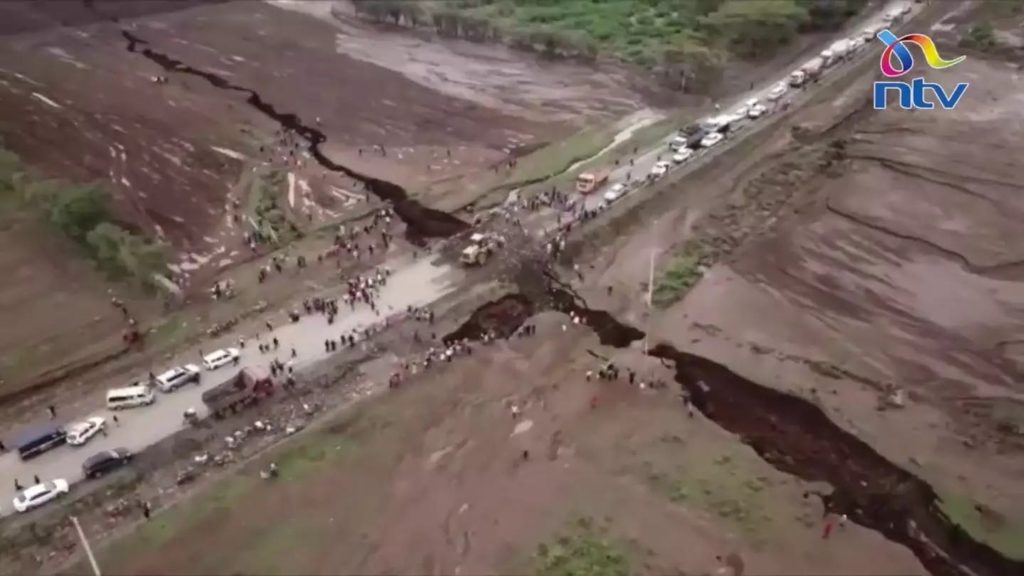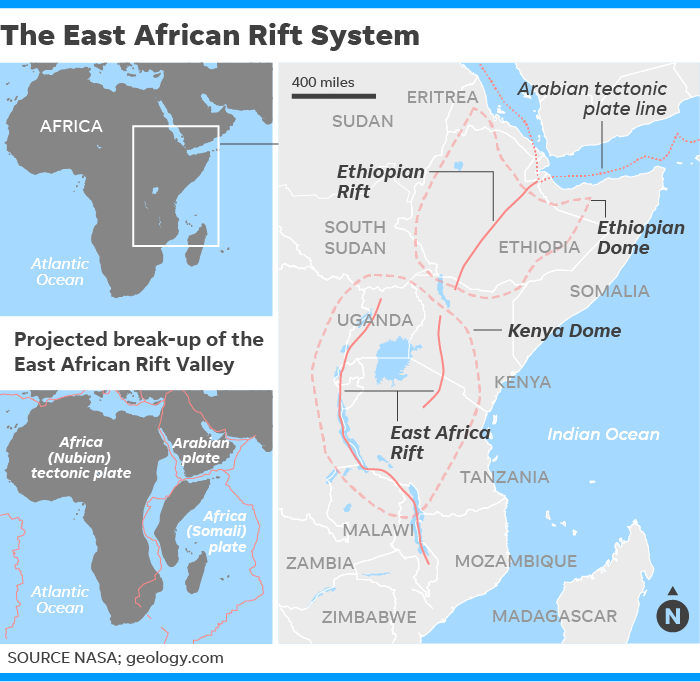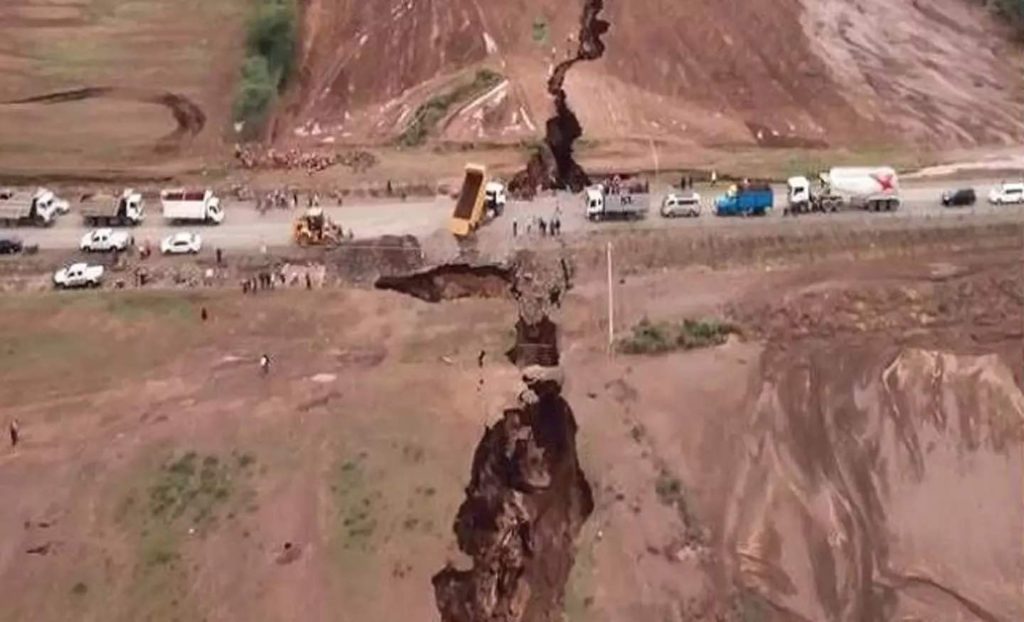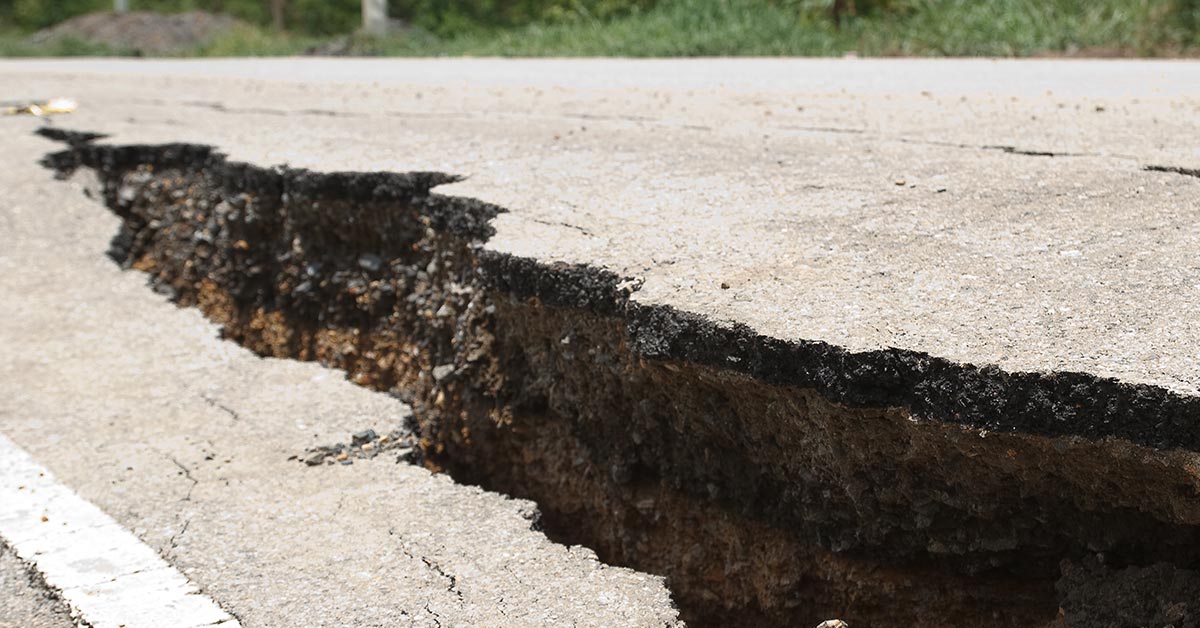This article was originally published on January 13, 2022, and has since been updated.
About two hundred million years ago, the supercontinent Pangea, which made up all the landmass on Earth, began to break apart. Eventually, the now separate landmasses spread apart to form the modern continents we have today, and the Atlantic and Indian Oceans [1].
Scientists are now saying that one day we may have a new continent because Africa is breaking apart. Right now, the tectonic plates are gradually splitting, and will one day break apart to form a new continent- and a new ocean in Africa.
A New Ocean in Africa
Ethiopia’s Afar region is made up of three tectonic plates- the Arabian, Nubian, and Somali tectonic plates. Right now, the three plates are slowly pulling away from each other, creating a massive rift and slowly forming a new ocean [2].
This is a complex geological process, and scientists are saying that in five to ten million years, the current continent of Africa will be split in two. For now, the only evidence of this is a 35-mile-long crack stretching across the Ethiopian desert [3].

What is a Tectonic Plate?
The Earth’s outer shell is divided into several plates that glide over the mantle- the rocky inner layer found above the Earth’s core. There are nine major plates, each one named for the landform that rests upon it. They are:
- The North American
- The Pacific
- The Eurasian
- The African
- The Indo-Australian
- The Australian
- The Indian
- The South American
- The Antarctic
When hot material near the Earth’s core rises, and colder convection rock sinks, this convection causes the plates to push and pull apart- this is called plate tectonics. Scientists are still studying and debating how exactly the plates move.
Mid-ocean ridges are where the plates pull apart, so there are gaps between the tectonic plates. Hot magma swells up at the ridges, forming a new ocean crust and pushing the plates apart. The shifting of tectonic plates is also responsible for volcanoes, and other natural phenomena like the San Andreas Fault in California [4].
Read: Rare Footage of Giant Phantom Jellyfish from 3,200 Feet Under the Sea

How a New Ocean is Formed
New satellite measurements are allowing scientists to better understand how the plates in Africa are moving, and allowing them to study the gradual birth of a new ocean.
In addition to the nine major plates, the Earth’s crust is made up of a dozen large plates that are constantly moving- mashing against each other, climbing over, sliding under, or stretching apart from each other.
The Arabian plate has been moving away from Africa for the past thirty million years, which has caused the Red Sea and the Gulf of Aden to form. The Somali plate is also stretching away from the Nubian plate along the East African Rift Valley, which extends through Ethiopia and Kenya.

Scientists are still not one hundred percent sure what is causing these plates to pull apart. One theory is that a massive plum of superheated rocks are rising from the mantle beneath East Africa, driving the region’s continental rift.
Advanced GPS instruments have allowed scientists over the last few years to get precise measurements of how the ground moves over time.
“With GPS measurements, you can measure rates of movement down to a few millimeters per year,” said Ken Macdonald, a marine geophysicist and professor emeritus at the University of California, Santa Barbara. “As we get more and more measurements from GPS, we can get a much greater sense of what’s going on.” [3]
Cynthia Ebinger, a geophysicist at Tulane University in New Orleans, has conducted a number of field research campaigns in the region. She has studied the 35-mile crack in Ethiopia’s desert, which opened up in 2005. She says that the split was the equivalent of several hundred years of tectonic plate movement in just a few days.
Through her research, she has determined that the rifting process isn’t always smooth, nor does it happen at a steady rate. Sometimes, as is the case in Ethiopia, there might be some intense, sudden jerks.
She has a theory that built-up pressure from rising magma could be causing explosive events like the one in Africa, like an over-filled balloon that could pop at even the slightest touch.
“We’re trying to understand the straw that breaks the camel’s back,” she said [3].
Read: Archaeologists In Pompeii Break Into a Secret Room, Then Freeze At The Sight Within
A Unique and Challenging Environment
Moore says that Afar is the only place on Earth where you can study how a continental rift turns into an oceanic rift, and is one of the most geologically unique places on the planet.
“We can see that oceanic crust is starting to form, because it’s distinctly different from continental crust in its composition and density.” [3]
It is also an extremely challenging environment- Afar is the hottest inhabited town on Earth.
“It has been called Dante’s inferno,” said Ebinger. “Daytime temperatures often go to 130 degrees Fahrenheit and they cool off to a balmy 95 degrees at night.” [3]
The three plates are spreading at different, very slow speeds. The Arabian plate is moving away from Africa at a speed of about one inch per year, while the other two plates are separating at a rate of about half an inch to 0.2 inches per year.
As they split apart, the Gulf of Aden and the Red Sea will flood in over the Afar region and into the East African Rift Valley. This will create a new ocean in Africa, and part of East Africa will become its own separate continent.
It is slow, but researchers say there are clear signs that this movement is taking place. It won’t happen in our lifetime, but millions of years from now the Earth may have one more continent and one more ocean.
Keep Reading: Ancient tree tells chaotic tale of Earth’s magnetic field reversal
Sources
- “Pangea.” Britannica
- “GEOLOGISTS SAY A NEW OCEAN IS OPENING UP IN AFRICA.” Futurism. Dan Robitzski. July 17, 2020.
- “The African continent is very slowly peeling apart. Scientists say a new ocean is being born.” NBC News. Denise Chow. July 16, 2020.
- “What is plate tectonics?” Live Science. Tiffany Means. May 26, 2021
This article originally appeared on The Hearty Soul and has been published here with permission.

